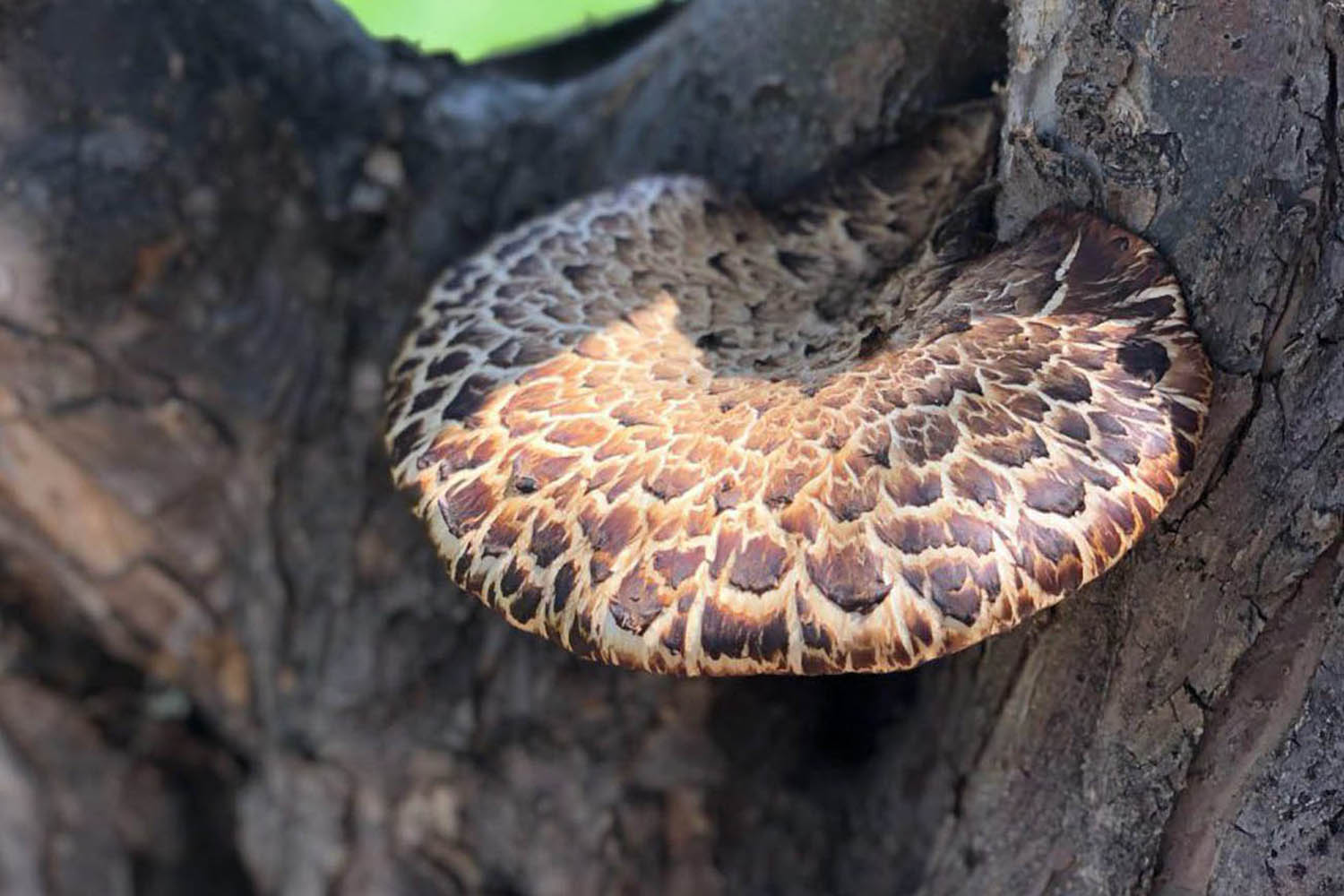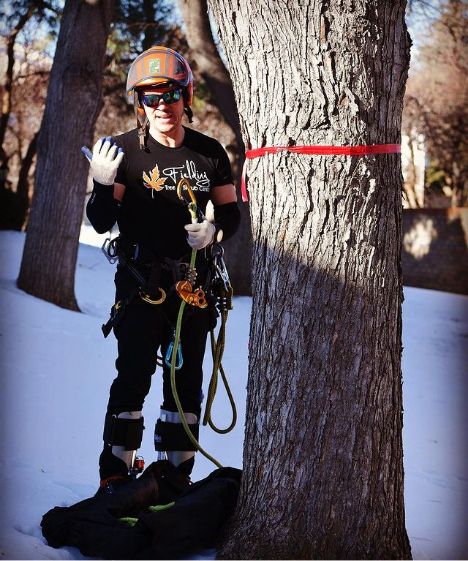Imagine that summer is coming to a close and fall is just around the corner—this is the tree’s time to shine! There is no better time to be outdoors and take in the beauty of the Denver Front Range. However, subtle clues may be telling you that these lush and colorful trees are in need of help—they are stressed! Learn how to identify different signs of tree stress with advice from your local tree doctors and how to help your trees recover, often with the support of Denver arborist services.
What Is Tree Stress and What Causes It?
Trees can get sick with a disease, but did you know that they can also experience stress? Have you ever had so much stress that you caught a cold, developed a migraine, or even came down with the flu? Just like us, trees can feel stress and that stress can weaken the immune system of a tree. Tree stress is simply any negative environmental factor that is hampering the healthy development of the tree.
It is widely believed that disease and infestation are causes of stress, but in fact these are actually the end results of a tree that is stressed out and weak. Human activity accounts for most causes of tree stress. Improper planting, transplanting, watering, fertilizing, exposure to pollution, and road salt are all man-made causes of tree stress.
Ironically, well-intentioned homeowners sometimes unwittingly increase tree stress by attempting tree care incorrectly. Overwatering, for example, is a major problem for some local tree varieties in Denver. Learn more about the signs of tree stress from your local tree doctors and how you can help your trees recover. Spotting the symptoms of a stressed tree early can effectively save the tree from major problems with disease or infestation down the road.
Signs and Symptoms of Stressed Trees
There are a whole host of native trees scattered along the front range, but no matter the species, all trees display common signs of stress. Keep a watchful eye on your fledging trees and catch the symptoms early on before they have a chance to worsen. This is your tree’s way of crying out for help!
Changing Foliage
Wilting or Curling Leaves
This is typically a sign seen in newly planted trees, and it may be signaling transplant shock. Your new tree is not adjusting well, but don’t worry! Proper watering and some mulch to help lock in the moisture may help.
Early Fall Colors
Are you seeing a spectacular color show in early August? Don’t get too excited, this could actually be a bad sign. The early change in color most likely is pointing to a problem with soil compaction or stress due to a nutrient deficiency. The high alkaline Denver soil can be tough on many different tree species, but with the right fertilizer application, you can help revive your tree. It’s like giving your tree vitamins!
Brown or Spotted Leaves
You don’t want your tree to be thirsty, but too much water is also a problem. If you are seeing brown or spotted leaves after a rainy spell, your tree is feeling swampy and may have developed a fungus of some sort. The fungus may require treatment and you should consult a trained arborist for next steps.
Leaf Drop
The air hasn’t even turned brisk yet, but your tree’s leaves have already dropped! This is one of the most common signs of tree stress, it can mean your tree experienced extreme heat, too little or too much water, or could be suffering from a disease. Schedule a consultation with a tree care expert to diagnose the problem.
Scorched Leaves
Do the leaves of your tree look as if they have been burned? This is a classic sign of leaf scorch. Caused by drought and extreme heat, leaf scorch can be mitigated and prevented with ongoing proper watering and prescription treatments.
Canopy Dieback
Stand back and look at the entire crown of your tree. Is it looking patchy, sparse, brittle, or thin in places? This is typically one of the very first signs that your tree is stressed. Appropriate watering and fertilization are key to restoring your tree to health and helping the canopy grow full and healthy again!
Stress on the Tree Trunk and Limbs
Splits and Cracks
It is not natural for a tree trunk to split or crack as a result of time or weathering. Healthy trees have the ability to heal and recover minor cracks or splits, much like our bodies can heal cuts. Large cracks or splits in the trunk can be a symptom of tree decay or lead to future decay.
Codominant Trunk
If your newly planted tree has developed multiple main trunks, this is a structural issue that could lead to future health issues or branch failure. Contact an arborist for a diagnosis and treatment plan.
Mushrooms
Many homeowners that spot mushrooms at the base or lower trunk of a tree do not see this as a cause for alarm. In fact, many people find them to be an interesting addition to the landscape. However, mushrooms can be a sign of root issues and should be investigated by an arborist.
Leaning Trunk
Plenty of trees lean slightly, especially with height and age. However, if you see a noticeable change in the lean of the trunk of your tree over a short period of time, it can be a sign of instability. Often caused by storm damage or oversaturated soils, extreme leaning can mean that your tree is a risk to your property.
Untreated Trees: Disease and Infestation
Denver trees face many real dangers including Emerald Ash Borer Beetles or a case of fire blight. Infestation and disease are more likely to strike trees that are already in a state of stress, because they cannot defend themselves. Know what your trees are up against and help them fight back.
Emerald Ash Borer
The Emerald Ash Borer (EAB) Beetle is a non-native wood-boring insect, arguably the most destructive pest in the United States, killing all types of North American ash species such as green, white, black and blue ash, and their cultivars (including autumn purple ash, a popular white ash varietal in Colorado).
It’s important to understand EAB infestation is almost always fatal to infested ash trees. Advice from your tree doctors is to take stock of your trees and make a plan to treat them before the EAB arrives. Otherwise, they could be killed within approximately four years! EAB is the most destructive forest pest in recorded US history.
Fire Blight
Fire blight is a destructive bacterial disease. The bacteria attacks leaves, turning them black, causes branches to develop dark cankers, and makes twigs ooze white puss. This gives the affected tree the appearance of being burned. Left untreated, fire blight will kill branches and then the entire tree.
Fire blight attacks many members of the rose family, including non-fruiting apple, pear, quince, crab apple, hawthorn, and mountain ash trees. This bacteria often enters the trees through wounds caused by improper pruning or winter snow damage. Proper pruning and ongoing treatment plans are your best defense.
Do you have any of these tree species on your property? If so, it is vitally important that you act quickly.
Untreated stressed trees are at great risk. When our immune system is compromised, disease takes hold easily and wreaks havoc on our bodies. The same is true for trees.
Your Tree Doctor’s Advice on Care And Treatment Options
Strong and healthy Denver trees have a better chance to fight off cankers, disease, and pest infestation. Keeping up with tree care is an important investment in your tree’s longevity. Here are our top recommendations for annual care that will help your trees avoid undue stress:
Watering
Proper watering is an overlooked but very important tree care practice. “Winter drought stress and a lack of winter watering is a large contributor to overall tree stress. Native Denver tree species prefer well-drained soil and can become compromised if their soil becomes too saturated with water. Watering in the colder months often falls within the homeowner’s responsibility since irrigation is turned off. We can provide expert consultation on how to care for your trees in each season.
Fertilization
Denver front range trees adapt with different soil types, but even the ones native to the area struggle in the high-alkaline soil. The best way to neutralize this threat is with the right fertilizer application. Balancing the soil and getting your trees the nutrients they crave will keep them strong and healthy.
Tree Trimming
Annual pruning and trimming helps all tree varieties keep their beautiful shape and color. It’s also a good opportunity to check and trim away any parts of the tree suffering from infection or pests. Proper trimming will lead to a healthier canopy and limit the potential for weather related damage.
Chemical Treatments
Correct chemical application can protect Denver trees from various dangerous pests. Treatments can also help an infected tree if you recognize issues early on.
Diagnosis
If you are concerned that any of your trees are showing signs of stress, contact one of our certified tree doctors immediately! At Fielding Tree Care we take a four-step approach for caring for stressed trees:
Step 1: A complimentary on-site assessment of your trees and/or shrubs. Sending a picture in advance helps speed things up!
Step 2: We work to cure the disease, or at least slow it down, with the most viable treatment option available for your tree or shrub’s unique situation.
Step 3: We implement a proactive approach to protect your existing trees from disease or infestation.
Step 4: Unfortunately, sometimes trees and shrubs die, even with our most proven treatment solutions. If your tree or shrub dies, we try to remove the dead plant as soon as reasonably possible. This keeps your property safe from unnecessary infestations and potentially unsafe situations.
Help your trees recover from stress so that they can fight off disease and infection. Ask our certified tree doctors about building a custom care plan for your trees. Schedule your complimentary on-site diagnosis today.






